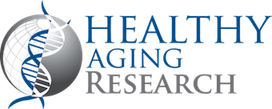
Healthy Aging Research
Open Access
ISSN: 2261-7434

ISSN: 2261-7434
Maria Cecilia Ciaccio Vendola
Faculty of Medicine of the University of Sao Paulo, Brazil
Scientific Tracks Abstracts: Clin Pediatr
This work aims to return scientific interest to the valuable biochemical components found in Phytotherapy in times of exponential growth of viral propagation in the world. Equinacea Purpúrea is worth noting that the relevant toxic effects are not known and their restrictions are few; recent studies in humans has demonstrated actions of interest in the immune response with its use, both of the aerial part and root Historic: The first illustration of the Echinacea plant was found in the third volume of the manuscripts of Professor R. Morison (first Professor of Botany at Oxford), dated 1699. The professor first named this species Dracunculus virginainus Latifolius, later in the 18th century it was named Rudbeckia Purpúrea until it received the name Echinacea Purpúrea. At the beginning of the 20th century it was brought to Europe, having in the thirties the great discovery of the German company Madaus and Co, which initiated research that is carried out until today, mainly by Dr Wagner in Munich. Germany commercializes drugs with the active principle. Active Principles: • Caffeic acid derivatives (phagocytic properties) • Essential oils in the aerial part: Pyrrolizidine Alkaloids: tussilagin and isotussilagin. • Alkamides: anti-inflammatory properties • Polysaccharides inulin, betaine (hyaluronidase inhibitors) • Resins containing fatty acids (oleic, linolenic, cerotinic and palmitic) and phytosterols. • Minerals: zinc and sulfur.Equinolone, chicoric acid. • Organic acids: chlorogenic and isochlorogenic • Flavonoids: thiamine and riboflavin. Literature Review: • The acids present in the roots have shown hepatoprotective effects. HOU C, 2011 • Alkamide was successfully quantified in the plasma of patients after ingestion of the extract by the LC-MS/MS assay. GOEY, 2012 • Concomitant use with warfarin (anticoagulant) seems to have its kinetics altered with a certain increase in serum levels, however without interfering with its pharmacological activity. CARRERO, 2018 • Herpes Labialis the response of Tregs cells immunosuppressant’s (CD4 +CD25+) decreased significantly, giving rise to lymphocyte redistribution. PRADO, 2010 • Preventive action against SARS COV II variants in children up to 12 years old proved to be very effective. NICOLUSSI, 2022 Conclusion: The objective of this review is to briefly inform some of the many studies that began in vitro, with animals and in humans and have been widely developed with positive scientific evidence. In addition to proven effective anti-inflammatory properties, inhibition of bacterial hyaluronidase and stimulation of B and T cells are bacteriostatic and antiviral factors that should be considered. Echinacea Purpurea can add positively in this fight that humanity faces against intelligent viral agents that place the most modern vaccine concepts still short of a full immunity coverage of our patients.
Maria Cecilia Ciaccio Vendola, from São Paulo, Brazil, studied Dentistry at the Faculty of Medicine of the University of São Paulo. With over 20 years of experience, she practices both clinically and academically. Her research focuses on aging in the oral cavity, immunity, and its connections to mental health.